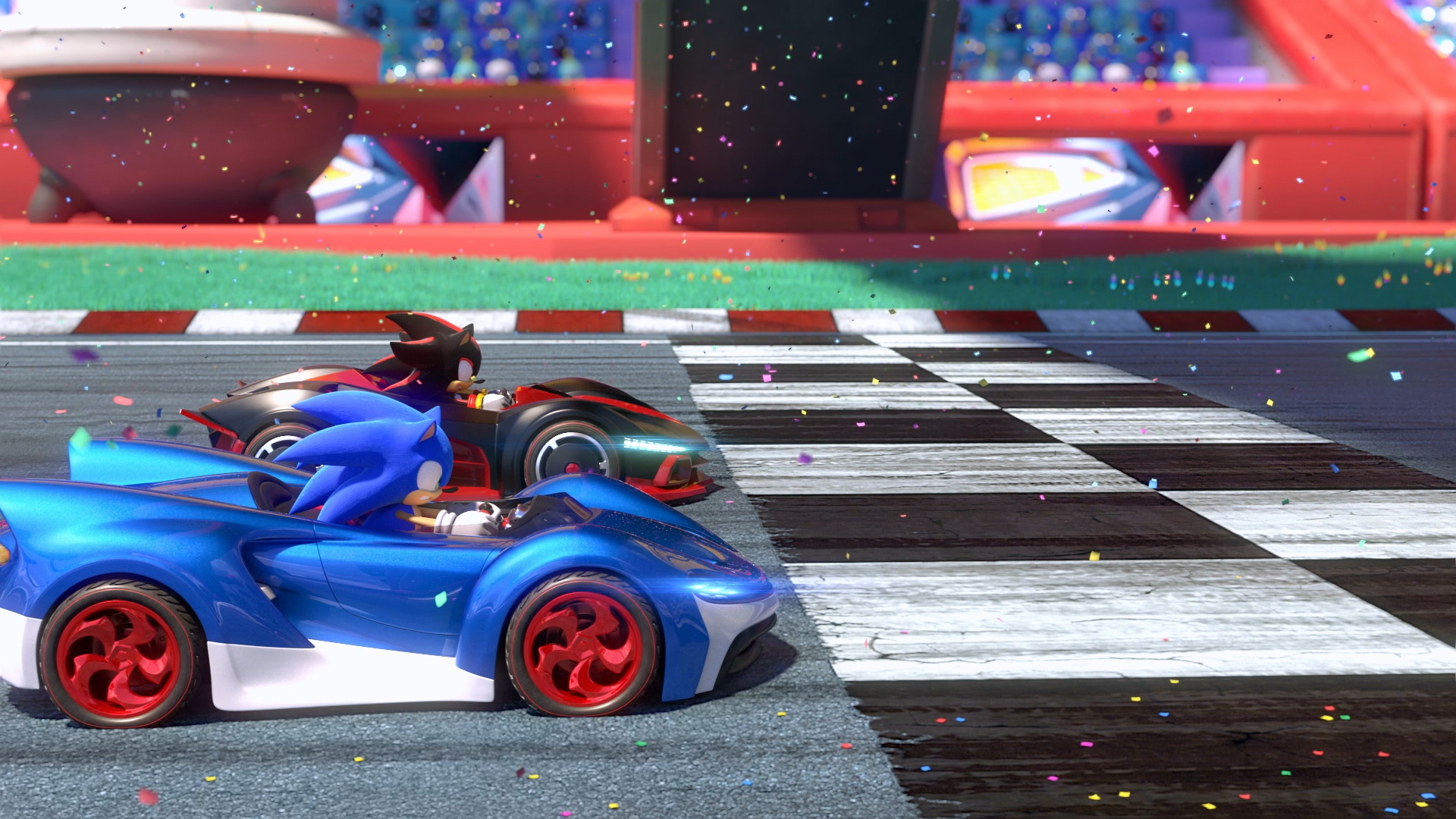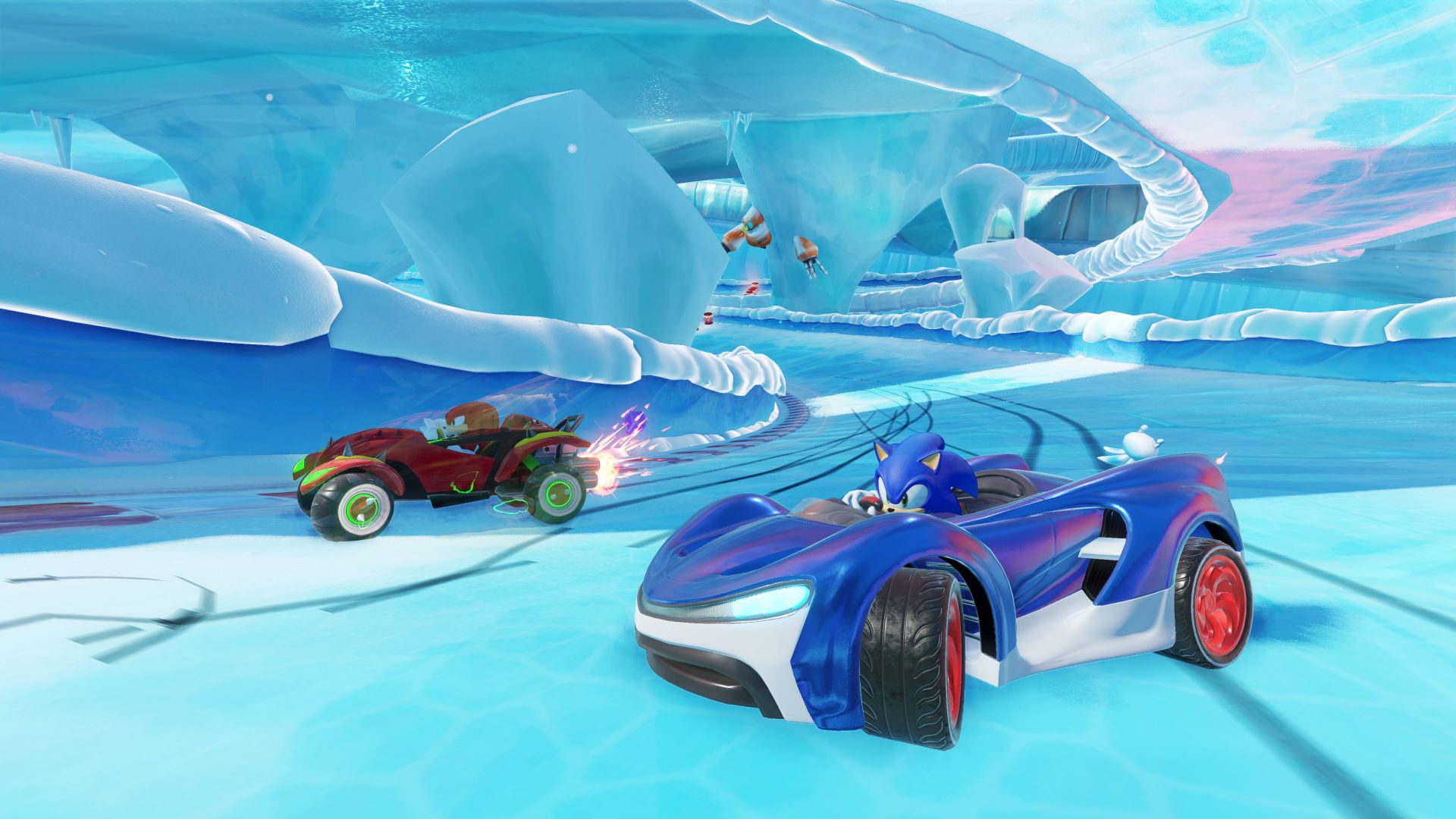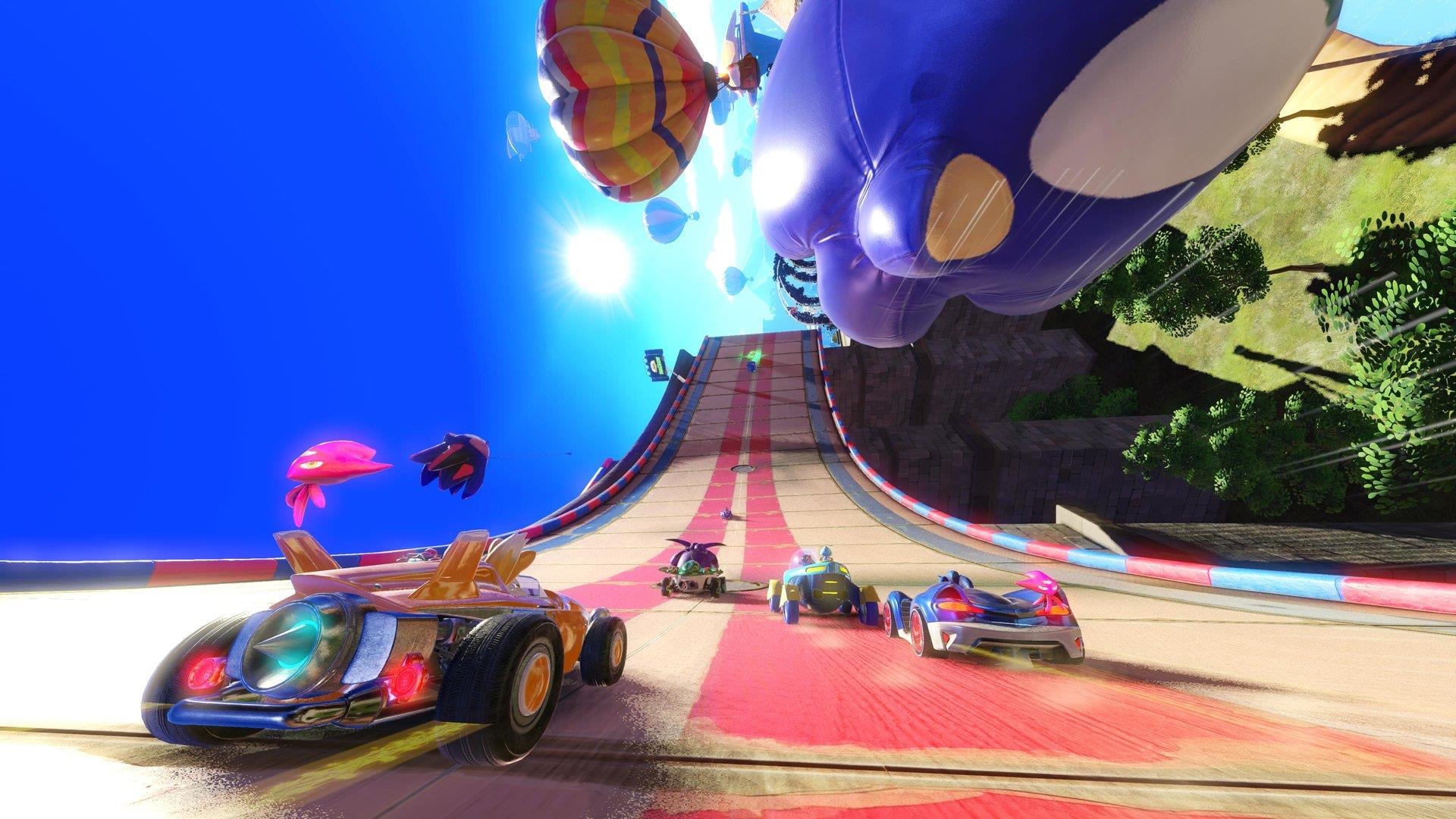

Publisher: Sega
Developer: Sumo Digital
Platforms: PS4, Xbox One, Switch, PC
Genre: Racing
Release Date: May 21, 2019
Team Sonic Racing is a kart racing video game developed by Sumo Digital and published by Sega. It is the third Sonic kart racing game to be developed by Sumo Digital.
Development
Sumo Digital, who previously developed Sonic & Sega All-Stars Racing and Sonic & All-Stars Racing Transformed, return as developers for Team Sonic Racing, with Takashi Iizuka, head of development division Sonic Team, acting as producer. Iizuka wanted to make a game based on co-op gameplay. He looked at the the 3D platformer Sonic Heroes, released in 2002, and took cues from its team based gameplay to implement in Team Sonic Racing.
The developers also looked at other team based competitive co-op titles for inspiration, including the likes of Overwatch and Splatoon. Sumo Digital and Iizuka wanted from the beginning to build on the gameplay foundations laid down in previous kart racing Sonic titles, but also wanted to create a new and fresh experience, which is why they decided to make the gameplay focused on team cooperation. The developers said they were not making a game that was similar to the likes of Mario Kart, because they were tailoring a different kind of gameplay experience.
For the first time in the series, the developers also decided to focus only on the Sonic property. As such, Team Sonic Racing would include characters only from Sonic games, and those from other Sega properties would not appear, whereas previous Sonic kart racers had featured characters from other Sega franchises, such as Crazy Taxi and Jet Set Radio.
Sumo Digital developed Team Sonic Racing using a modified version of the engine that had also been used previously for Sonic & Sega All-Stars Racing and Sonic & All-Stars Racing Transformed. The developers said it allowed them to optimize their game further, and also to achieve parity across all versions of the game on all the platforms it is made for.
Team Sonic Racing also sees Jen Senoue composing the soundtrack, returning to the series for the first time since Sonic Generations in 2011, with the game’s theme song, “Green Light Ride”, having been performed by Senoue’s band, Crush 40. According to producer Takashi Iizuka, Senoue was chosen because, in his words, they wanted the music to sound “cool” and “exciting”.
Gameplay
Team Sonic Racing differs from previous Sonic kart racing titles and most other games in the kart racing genre quite a lot, due to its emphasis on team based co-op gameplay. Players are part of a team of racers, who must work together to perform better. Performing as a team is key for winning racing, and there are mechanics in play that emphasize team play as well, such as sharing power ups with team members.
Each race consists of twelve competitors in total, who are divided into four teams of three racers each. Any character can be in any team, while players can also choose to have three of a single character being in a single team as well. Due to the game’s focus on teams, winning races isn’t dependant on finishing first, but rather on the points accumulated by the end of the race by the team in total.
Players can use various techniques to assist teammates. These include using power ups and sharing power ups, but also other specific techniques, such as Rival Takedowns, Skim Boost, Slingshot, and more. As players race through through the courses, an Ultimate meter also builds up, with the build up being faster based on how well the player is performing. It is also based on the number of team-based activities players perform, such as transferring power ups to one another. Activating the Ultimate meter gives the player a burst of speed and a short burst of invincibility. All three members of a team can also activate their Ultimate meters at the same time for some significant advantages.
Each character in the roster of Team Sonic Racing also fallsinto one of thee categories: speed, power, or technique. Each of these three categories has its own characteristics and attributes. The speed class characters have higher top speeds, have balanced handling, have the defensive “Radial Burst” ability, but have poor acceleration and defense. The power class characters are able to smash and drive through obstacles on tracks, have good boost and defense, can obtain more aggressive Wisps, and do not spin out of control when incurring damage, though they have low top speeds and handle more poorly than other classes. The technique class characters are able to drive over rough terrain without slowing down, have the best handling, better steering, and high acceleration.
While in the past Sonic kart racers have allowed players to take control of boats and planes, Sonic Team Racing focuses just on cars. The developers say they have done so because they felt having vehicles other than cars didn’t fit with the game’s team-based gameplay. In terms of tracks, there are a total of 21 in the game. These are split across seven zones, and similar to characters, are based only on locations from Sonic titles, and no other Sega properties. Some tracks from Sonic & Sega All-Stars Racing and Sonic & All-Stars Racing Transformed also return.
Customization mechanics are also featured, with more customizaition options – both cosmetic and otherwise – being unlocked via playing across several game modes. These include things such as paint jobs, or individual kart components, which can be used to customize various aspects of your karts, including handling, defense, acceleration, boost, top speed, and more. Each of the 21 characters has 9 individual customization options, with three applicable to the front of karts, three to the rear, and three to the wheels. In total, there are 135 customization parts in the game (non-cosmetic).
The game also features several modes. These include Grand Prix, which sees players competing against one another to achieve the highest points total, Time Trial, and Exhibition, will allow players to race using custom rulesets. There is also a campaign, called Team Adventure, which serves as an introduction to the game’s mechanics. It is be divided into multiple missions, which task players with various objectives to complete, such as last man standing objectives, races where players have to collect more Rings than other competitors, and more. Progression in the campaign also yields unlocks, which can be used in other modes as well.
Team Sonic Racing also has multiplayer options. Upto twelve players are able to compete in online races, while local multiplayer supports a total of three players. In addition, the campaign also features support for up to three total players.
Note: This wiki will be updated once we have more information about the game.

















